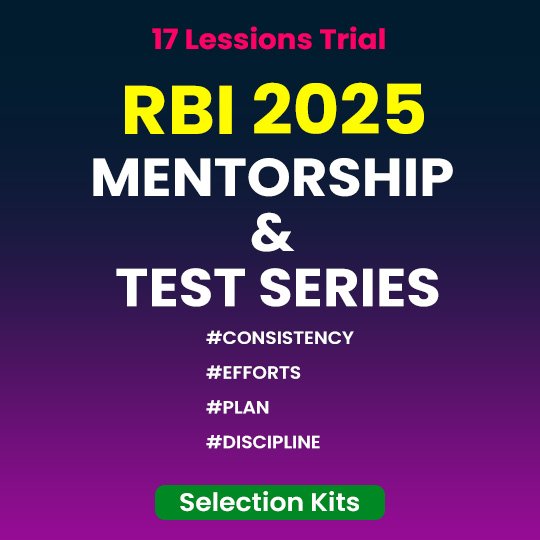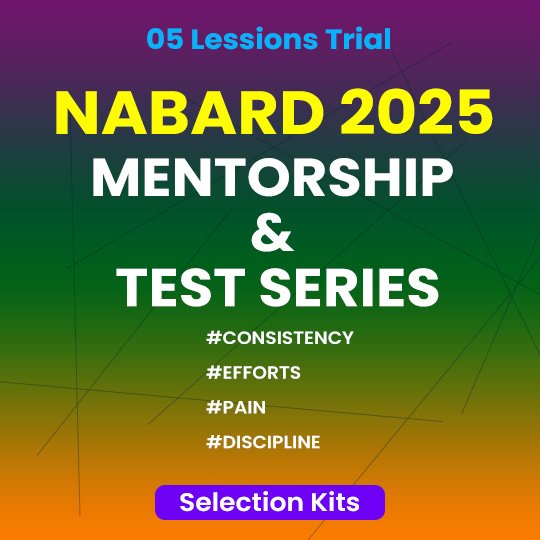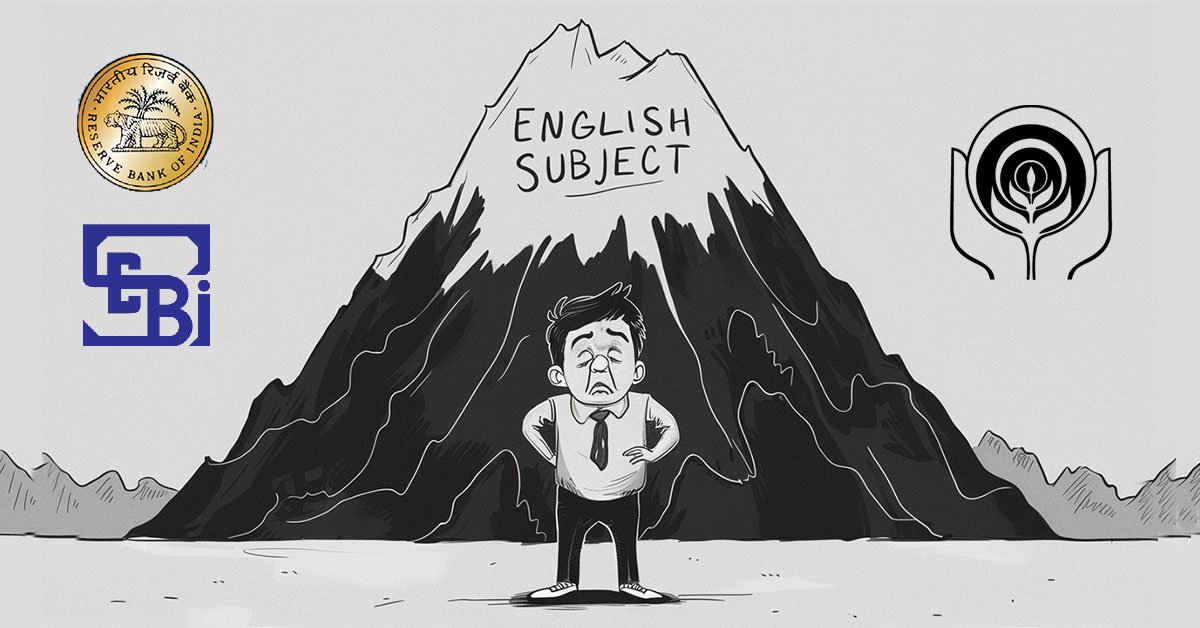Daily Current Affairs Quiz
19 November, 2025
National Affairs
1. Global Methane Status Report 2025
Source: UNEP
Context:
The report, released by the UN Environment Programme (UNEP), serves as a mid-term evaluation of the Global Methane Pledge (GMP), assessing progress, challenges, and pathways to reduce global methane emissions by 30% by 2030.
Emissions Overview
- Revised Baseline (CLE scenario):
- Projected 2030 emissions: 369 Mt CH₄, 4% lower than 2021 pre-Pledge levels due to slower gas market growth and new waste regulations in Europe & North America.
- Ambition Gap:
- Current NDCs and Methane Action Plans would reduce emissions by only 8% below 2020 levels, far short of the 30% GMP target.
- Technically Feasible Reduction (MTFR):
- Implementation could cut emissions by 32% by 2030 (131 Mt CH₄).
- Avoid 0.2°C warming by 2050 and 180,000 premature deaths annually by 2030.
- Cost-Effectiveness:
- Over 80% of MTFR potential is low-cost (<$ per ton CH₄).
- Waste sector could provide $9 billion/year net savings via biogas capture.
Sectoral Emissions & Mitigation Potential
| Sector | Share of Emissions | Key Sources | Mitigation Potential |
|---|---|---|---|
| Agriculture | 42% (146 Mt) | Livestock enteric fermentation (76%), rice cultivation (21%) | Improved livestock management, rice paddy aeration |
| Energy | 38% (135 Mt) | Oil & gas production, coal mining | Leak detection & repair, ban non-emergency venting |
| Waste | 20% (71 Mt) | Landfills (37 Mt), wastewater (30 Mt) | Source separation, landfill gas capture |
- Geographical Focus:
- G20+ countries account for 65% of emissions and 72% of mitigation potential.
Global Impacts
- Health & Productivity:
- CLE scenario could cause 24,000 premature deaths, 2.5 Mt crop losses, and 6.9 million lost labour hours annually by 2030 due to ground-level ozone.
- Regional Disparities:
- Non-G20+ regions (Africa, Latin America, parts of Asia) projected to see 16% rise by 2030 and 53% by 2050 without mitigation.
- Data & Reporting Gaps:
- Persistent underreporting, especially in fossil fuel sector; measured emissions can double official inventories.
- Locked-in Emissions:
- Waste methane persists over decades; delayed mitigation will lose potential for 2040–2050.
- Financial Mismatch:
- Tracked methane finance: $13.7 billion/year vs. MTFR cost of $127 billion/year.
Recommendations
- Measurement-Based Regulations:
- Use direct measurement tools (satellites, airborne surveys).
- Follow EU Methane Regulation & OGMP 2.0 models.
- Sector-Specific “No-Regret” Policies:
- Energy: LDAR, ban non-emergency venting.
- Waste: Organic waste separation, landfill gas capture.
- Agriculture: Ban open burning, intermittent rice field aeration.
- Financial Strategies:
- Concessional finance, risk-sharing for developing economies and NOCs.
- Repurpose a portion of $635 billion harmful agricultural subsidies to close the funding gap.
- Strengthen National Targets:
- Convert GMP participation into quantified, time-bound NDC methane targets.
- Integrate with Decarbonization:
- Combine methane reduction with energy decarbonization, demand-side measures, and sustainable diets to achieve a 53% reduction by 2050, aligned with 1.5°C goals.
2. National Action Plan on Antimicrobial Resistance (NAP-AMR 2.0)
Source: TH
Context:
Antimicrobial Resistance (AMR) is a growing public health concern globally and in India, threatening effective treatment in surgery, cancer care, and other medical interventions. Overuse and misuse of antibiotics accelerate AMR, reducing the effectiveness of life-saving drugs.
New Initiative:
NAP-AMR 2.0 is India’s updated five-year strategic framework (2025–29) to combat antimicrobial resistance (AMR) using a One Health approach, covering human health, animal husbandry, agriculture, food safety, environment, and research sectors.
Launched by: Union Ministry of Health & Family Welfare
Context: WHO’s World AMR Awareness Week
Aim:
- Establish a coordinated national response to AMR across sectors.
- Reduce misuse and overuse of antimicrobials.
- Strengthen laboratory surveillance, stewardship, and infection control.
Key Objectives of NAP-AMR 2.0:
- Early Gap Identification: Detect areas of misuse and intervention needs promptly.
- Increased Ownership: Encourage greater responsibility among stakeholders for AMR-related actions.
- Improved Inter-Sectoral Coordination: Strengthen collaboration between health, agriculture, veterinary, and environmental sectors.
- Stronger Private Sector Engagement: Include private healthcare providers, pharmaceutical companies, and diagnostic labs in AMR containment strategies.
3. Sentinel-6B Satellite
Source: IE
Context:
An advanced ocean-altimetry satellite designed for high-precision measurement of global sea-surface height, waves, winds, and climate-driven ocean changes. It continues the legacy of Topex-Poseidon → Jason-1/2/3 → Sentinel-6 Michael Freilich missions since the early 1990s.
Launch Details:
- Launch Vehicle: SpaceX Falcon-9
- Launch Site: Vandenberg Space Force Base, USA
- Joint Mission By: NASA, NOAA, ESA, Eumetsat, European Commission, with support from CNES.
Aim:
- Provide continuous, accurate sea-level rise measurements.
- Monitor ocean temperature patterns and sea-state data.
- Improve climate modelling, storm forecasting, and coastal resilience planning.
Key Features:
- Radar Altimeter: Measures sea-surface height with millimetre precision.
- Advanced Microwave Radiometer: Corrects atmospheric water-vapour errors for precise altimetry.
- Six scientific instruments enabling measurement accuracy of ~1 inch across 90% of global oceans.
- Orbits Earth at 2 km/s, completing a revolution every 112 minutes.
4. National Industrial Classification (NIC) 2025
Context:
A standardized six-digit classification system for categorizing all economic activities in India, replacing the earlier five-digit NIC-2008.
History:
- First introduced in 1962.
- Subsequent revisions: 1970, 1987, 1998, 2004, 2008.
Aim:
- Reflect India’s evolving economic structure.
- Improve granularity and accuracy of economic data.
- Align with UN’s International Standard Industrial Classification (ISIC) Revision 5.
Key Features:
- Covers emerging sectors: cloud services, blockchain, platform-based services, renewable energy, waste management, AYUSH.
- Introduces new classes for intermediation services (logistics, real estate, food services) and environmental remediation.
- Will serve as the standard framework for all official statistics, surveys, and policy design in India.
National Sample Survey Office (NSSO)
- What it is:
India’s premier institution for large-scale sample surveys across socio-economic domains. - Established:
1950, by Prof. P.C. Mahalanobis. - Aim:
Collect and analyse nationally representative data on employment, health, education, industries, prices, and other socio-economic variables.
Key Features:
- Headed by a Director General under the Ministry of Statistics & Programme Implementation (MoSPI).
- Comprises four divisions:
- Survey Design and Research Division (SDRD) – Kolkata-based; designs surveys and methodologies.
- Field Operations Division (FOD) – Manages nationwide data collection through zonal and regional offices.
- Data Processing Division (DPD) – Handles sample selection, software, and data validation.
- Survey Coordination Division (SCD) – Coordinates activities and publishes the journal Sarvekshana.
- Conducts key surveys such as Annual Survey of Industries (ASI) and Periodic Labour Force Survey (PLFS).
5. QS Sustainability Rankings 2026
Source: IE
Context:
An annual ranking assessing universities globally on environmental and social impact, sustainability research, governance, and alumni impact. It evaluates institutions’ contributions to Sustainable Development Goals (SDGs) through research, education, and societal outcomes.
Key Metrics:
- Environmental Research & Education
- Social Impact & Equality
- Knowledge Exchange & Alumni Outcomes
- Governance and Institutional Commitment to Sustainability
Global Top 5 Institutions (2026):
- Lund University, Sweden (=3 in 2025)
- University of Toronto, Canada
- UCL, UK (=5 in 2025)
- University of Edinburgh, UK (=7 in 2025)
- University of British Columbia, Canada (=5 in 2025)
India’s Performance in QS Sustainability Rankings 2026
- No Indian institution made it to the top 200 globally.
- Top Indian Institutions & Global Ranks:
- IIT Delhi: 205 (down from 171 in 2025)
- IIT Bombay: 236 (down from 235)
- IIT Kharagpur: 236 (down from 202)
- IIT Madras: 305 (down from 277)
- IIT Kanpur: 310 (down from 245)
- IISc Bangalore: 462 (down from 376)
- Among India’s top 10 institutions, 7 saw a drop in ranking compared to last year.
Performance Across Sustainability Indicators
| Lens / Indicator | Weight | Top Indian Institution | Global Rank |
|---|---|---|---|
| Social Impact | 45% | IIT Delhi | 382 |
| Equality | 12% | Manipal Academy of Higher Ed | 441 |
| Knowledge Exchange | 10% | University of Delhi | 94 |
| Impact of Education | 7% | University of Delhi | 785 |
| Employability & Outcomes | 11% | IIT Delhi | 93 |
| Health & Wellbeing | 5% | IIT Roorkee | 537 |
| Environmental Impact | 45% | IIT Bombay | 100 |
| Environmental Sustainability | 15% | IIT Kharagpur | 49 |
| Environmental Education | 17% | IISc Bangalore | 42 |
| Environmental Research | 13% | IIT Kharagpur | 291 |
| Governance | 10% | University of Delhi | 187 |
Key Observations
- Indian universities lag behind global peers, particularly in environmental sustainability, alumni impact, and staff perception of climate commitment.
- QS highlighted that ranking drops are comparative—global peers have improved at a faster pace, not necessarily that Indian universities declined in absolute terms.
- The number of universities evaluated has increased, with more than 250 new entrants, intensifying competition.
India’s Overall Position
- Total Indian universities featured: 103
- Improved: 32
- Same rank: 15
- Dropped: 30
- Top-ranked Indian institution (IIT Delhi) remains outside top 200, indicating a need for stronger sustainability initiatives and visibility in research, education, and governance domains.
6. India Re-Elected to Codex Executive Committee
Source: News on Air
Context:
India has been unanimously re-elected as the Asian regional representative on the Executive Committee (CCEXEC) of the Codex Alimentarius Commission (CAC).
- Term:
- Until the conclusion of CAC50 in 2027.
Role & Functions:
- Represent technical and trade priorities of Asian countries in global food standard-setting.
- Contribute to discussions on Codex efficiency, future challenges, and technology adoption.
- Oversee development of international food standards between full commission sessions.
Codex Alimentarius Commission (CAC)
An international intergovernmental body that develops food standards, guidelines, and codes of practice.
- Established:
- May 1963 by FAO and WHO.
Organizational Structure:
- Executive Committee (CCEXEC): Manages standard development between sessions.
- General Subject & Commodity Committees: Develop specific standards (e.g., pesticides, methods of analysis).
- Coordinating Committees: Facilitate regional coordination.
Aim:
- Protect consumer health.
- Ensure fair practices in international food trade.
Key Features:
- Science-based global food standards body recognized under WTO’s SPS Agreement.
- 189 members: 188 countries + European Union.
- India has been a member since 1964.
- Develops harmonized standards to protect health and promote fair trade practices.
Banking/Finance
1. SIDBI Launches Antariksh Venture Capital Fund (AVCF)
Source: Mint
Context:
A spacetech-focused venture capital fund set up by SIDBI Venture Capital Ltd. (SVCL), SIDBI’s subsidiary. Designed to invest in early-stage and growth-stage Indian spacetech companies across launch systems, satellites, payloads, earth observation, communications, and downstream applications.
Fund Details:
- First close: ₹1,005 crore
- Anchor investor: IN-SPACe, ₹1,000 crore
- Category: II Alternative Investment Fund (AIF)
- Tenure: 10 years
- Significance: Largest spacetech-focused VC fund in India; among the largest globally
Purpose & Objectives
- Strengthen India’s national space capabilities and competitiveness.
- Support early-stage and growth-stage spacetech companies.
- Enable faster commercialisation of Indian space innovations.
- Align with India’s goal of expanding its space economy to $44 billion by 2033.
What is an AIF?
- AIFs are privately pooled investment vehicles that collect money from investors and invest in assets other than traditional investments like stocks, bonds, and deposits.
- Regulated under the SEBI (Alternative Investment Funds) Regulations, 2012.
Who can invest?
- Mainly high-net-worth individuals (HNIs), institutional investors, and foreign investors.
- Minimum investment per investor: ₹1 crore (lower for employees/directors).
Categories of AIF
Category I AIF
- Invests in socially or economically desirable sectors.
- Examples:
- Venture Capital Funds
- Angel Funds
- SME Funds
- Social Venture Funds
- Infrastructure Funds
Category II AIF
- Do not get specific incentives from the government but are not allowed leverage except for day-to-day operations.
- Includes:
- Private Equity Funds
- Debt Funds
- Venture Capital Funds also operate here sometimes (as in Antariksh Fund)
Category III AIF
- Uses complex strategies: derivatives, leverage, long-short positions.
- Includes:
- Hedge Funds
- PIPE Funds (Private Investment in Public Equity)
Venture Capital Fund (VCF)
- A type of AIF (mainly under Category I, sometimes Category II)
- Pools capital to invest in early-stage, high-growth potential startups.
- Focuses on risky and innovative sectors like:
- Spacetech
- AI and Deeptech
- Biotechnology
- Fintech
- Clean energy
How VCFs Work
- High-risk, high-return investments.
- Fund managers take equity in startups.
- Returns depend on startup growth and exit (IPO, acquisition, buyback).
Key Characteristics of VCFs
- Support startups at seed, early-stage, Series A/B levels.
- Provide capital + mentorship + network access.
- Have long investment horizons (8–10 years typical).
2. RBL Bank Launches LUMIERE & NOVA Premium Credit Cards
Context:
RBL Bank has launched two new premium credit cards—LUMIERE and NOVA—marking its entry into India’s high-end credit card segment. These cards target the rapidly growing HNI (High-Net-Worth Individuals) and affluent customer base.
What Was Launched?
- Two premium credit cards: LUMIERE and NOVA
- Marks RBL Bank’s debut in the premium credit card category
Target Segment
- HNWIs
- Affluent and upper-middle income consumers
Features of the Cards
1. LUMIERE Credit Card
- Type: Invitation-only premium metal card
- Weight: 18 grams
- Annual Fee: ₹50,000
- Focus: Ultra-premium lifestyle and travel features
- Benefits Include:
- Elite airport services
- Luxury travel advantages
- Curated lifestyle privileges
- Designed exclusively for high-spending customers with sophisticated preferences.
2. NOVA Credit Card
- Type: Premium metal card
- Annual Fee: ₹12,500
- Target: Consumers seeking high value through rewards and lifestyle benefits
- Benefits Include:
- High reward points on flight + hotel bookings
- Restaurant savings
- Complimentary golf rounds and lessons via partner networks
- Positioned as a rewards-driven premium card for aspirational customers.
About RBL Bank
- Managing Director & CEO: R. Subramaniakumar
- Headquarters: Mumbai, Maharashtra
- Tagline: “Apno Ka Bank”
- Established: 1943
4. Master Capital Services Receives SEBI’s In-Principle Approval for Mutual Fund Business
Source: ET
Context:
Master Capital Services Limited, a wholly-owned subsidiary of Master Trust, has received SEBI’s in-principle approval to enter the mutual fund business.
What “In-Principle Approval” Means
- It is a preliminary approval granted by SEBI.
- Allows the applicant to begin preparatory work such as setting up systems, hiring key personnel, meeting compliance standards, and filing scheme documents.
- The company must then apply for final registration under SEBI (Mutual Funds) Regulations, 1996.
- Only after final approval can they formally launch mutual fund schemes and start collecting money from investors.
Why This Is Significant
- Master Trust is a known broking and financial services group; entering the mutual fund space expands its presence into asset management.
- The MF industry is growing rapidly with increasing retail SIP participation.
- New entrants bring more competition, innovation, and product diversity for investors.
Regulatory Requirements to Start a Mutual Fund
Under SEBI MF Regulations, an applicant must:
- Have a sponsor with a sound track record and positive net worth.
- Set up an Asset Management Company (AMC) and a Trustee Company.
- Maintain minimum net worth of ₹50 crore for the AMC.
- Comply with fit and proper criteria, governance standards, and risk-management systems.
- Meet infrastructure, compliance, and technology benchmarks.
5. South Indian Bank Launches SIB HER Account for Women
Context:
South Indian Bank (SIB) has launched the SIB HER Account, a premium savings account designed exclusively for women—including NRIs—at an event in Kochi, Kerala (Nov 2025).
Target Group
- Women aged 18–54 years
- Domestic + NRI customers
Minimum Monthly Balance
- ₹50,000
- Waiver Conditions:
- Maintain FD of ₹1 lakh OR
- Debit card spends of ₹50,000 in the previous month
Agriculture
1. Planned Amendments to PPV&FRA Act and Farmers’ Concerns
Source: TH
Context:
The Union Agriculture Minister, Shivraj Singh Chouhan, announced plans to amend the PPV&FRA Act, incorporating suggestions from stakeholders to address current challenges and bolster farmers’ interests.
The Act has been in force for 20 years; the agricultural sector has seen technological, scientific, and trade changes during this period.
Consultations:
- A committee headed by agriculture scientist R.S. Paroda, under PPVFRA, is conducting wide stakeholder consultations.
- Aim: Examine the Act’s provisions, identify deficiencies, and suggest amendments to align with present-day realities.
Key Areas of Proposed Amendments:
- Definition of Variety and Seed:
- Expand “variety needs” to include combinations of genotypes (aligning with draft Seeds Bill 2019).
- Include seedlings, tubers, bulbs, rhizomes, roots, tissue culture plantlets, synthetic seeds, and other vegetatively propagated material under the definition of seed.
- Breeder and Institutions:
- Redefine “institution” in the definition of breeder to cover both public and private establishments in the seeds sector.
- DUS Test (Distinctness, Uniformity, Stability):
- Include trait importance in DUS guidelines.
- Address concerns of misuse and ensure proper testing before registration.
- Abusive Acts:
- Define actions like producing, selling, marketing, exporting, or importing a variety with the same denomination as another as punishable.
Farmers’ Concerns:
- Community Seeds Protection:
- Farmers’ groups, including Samyukt Kisan Morcha, demand registration for community-developed seeds.
- Fear misuse of DUS tests by private companies to monopolise seeds. Example cited: Njavara paddy seed from South India.
- Awareness and Inclusion:
- Small peasantry often unaware of techno-legal frameworks and Intellectual Property Rights (IPR).
- Seeds are traditionally treated as shared community resources, conflicting with exclusive economic rights under IPR.
- Compensation Mechanisms:
- Original Act has provisions for compensation for non-performance of IP-protected propagating material, but detailed criteria are still missing in the Rules.
- Global Pressure Concerns:
- Developing countries are being pressured to align domestic laws with international IPR frameworks, which may conflict with open-source or community-based seed practices.
2. Centre Introduces New Crop Loss Coverage Norms under PMFBY
Source: BL
Context:
- The Union Agriculture Ministry has formalised new modalities for compensating crop loss due to:
- Wild animal attacks
- Paddy inundation
- These measures respond to farmers’ long-standing demand for broader coverage under the Pradhan Mantri Fasal Bima Yojana (PMFBY).
Wild Animal Attacks – Add-on Cover:
- Crop damage from wild animals is now the fifth “Add-on Cover” under the Localised Risk category.
- Implementation:
- States will notify:
- The list of wild animals responsible for crop damage
- Vulnerable districts or insurance units based on historical data
- Farmers must report losses within 72 hours via the Crop Insurance app, uploading geotagged photographs
- States will notify:
- Effective from: 2026 kharif season
Expected Impact:
- Particularly beneficial for states with high human–wildlife conflict, including:
- Odisha, Chhattisgarh, Jharkhand, Madhya Pradesh, Maharashtra, Karnataka, Kerala, Tamil Nadu, Uttarakhand, and the north-eastern states
Facts To Remember
1. India’s Raghu Prasad named FIH Male Umpire of the Year
India’s Raghu Prasad was on Tuesday named the FIH Male Umpire of the Year 2025 by the International Hockey Federation for “professionalism, dedication, and excellence” in officiating matches.
2. India’s air rifle mixed teams win gold, bronze at Deaflympics
Indian shooters continued their domination at the 25th Deaflympics in Tokyo on Tuesday, securing a double-podium finish by winning both the gold and bronze in the 10m air rifle mixed team event.
3. Payas and Swastika clinch UTT National-ranking titles
Payas Jain of Delhi and PSPB’s Swastika Ghosh claimed the men’s and women’s singles titles in the UTT National-ranking table tennis tournament in Panchkula. In the youth (u-19) categories, Priyanuj Bhattacharyya (Assam) defeated M. Balamurugan 4-1 in the boys’ final while Syndrela Das of West Bengal won 4-0 win over Shriya Anand of Tamil Nadu.
4. SECL Launches Coal India’s First Paste Filling Project
South Eastern Coalfields Limited (SECL) has launched Coal India’s first underground paste filling technology project at the Singhali underground mine in Korba, Chhattisgarh. The project was inaugurated on November 11, 2025.
5. UIDAI to Launch Aadhaar App for Stronger Offline Verification
The Unique Identification Authority of India (UIDAI) will launch the Aadhaar App to strengthen the offline verification system.
6. World Fisheries Day 2025 to be celebrated on 21st November
World Fisheries Day 2025 will be celebrated on 21st of this month at Sushma Swaraj Bhawan in New Delhi.
7. BIMSTEC Young Diplomats Programme Launched in New Delhi
An annual BIMSTEC Young Diplomats Interaction Programme was inaugurated at Sushma Swaraj Institute of Foreign Service in New Delhi.
8. 56th IFFI to begin tomorrow at Panaji, Goa
The 56th International Film Festival of India (IFFI 2025) is all set to kickstart tomorrow.



















